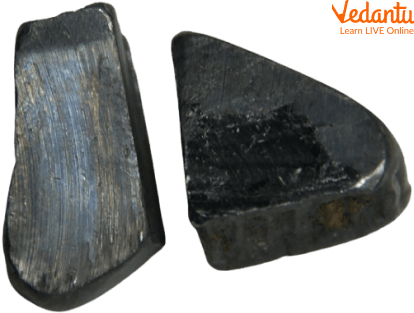




Why Is Lead Important? Key Uses and Everyday Examples
Lead is a chemical element. Lead (Pb), is a sloppy, glittering white or greyish metal in group 14 of the periodic table. It is the worst leader of electricity. Lead is ductile, pliable, and dense. It is trusted by the alchemist to be the age of metals. It is a highly long-lasting element. Pb (plumbum) is the short form of the Latin word ‘Lead’. Its ores are extensively distributed. It has a short melting point, so it is simply melted. It was

Lead Metal
used in ancient times to make statues, coins, utensils, and writing tablets. It was the first metal known to people. Lets learn more about the Lead in this article.
Uses of Lead
There are various uses of lead which are as follows:-
It may be used as a pure metal, as a chemical mixture, and alloyed with other metals.
It is used for the lead acid storage battery.
It is used in the building industry for lightning up or crumbling to turn aside water penetration.
It is used for lead pipes, pigments, cable sheathing, lead alloys, lead weights for scuba diving, ammunition, lead crystal glass, radiation protection, and car batteries.
It is used to make bearings, solder, and type metal.
It is frequently used to store abrasive liquids.
It is a metal that has been used since Roman times for making paints and pipes.
It is used for soldering parts of electrical equipment.
We use it as a shield.
Lead is used in alloys as an element in copper and steel.
Properties of Lead
There are some properties of lead which are as follows:-
It is bluish-white shining metal with soft, ductile, and highly hard.
It is very impervious to corrosion and tarnishes upon submission to air.
Its main properties include low melting point, ease of casting, high solidity, acid opposition, electrochemical reaction with sulfuric acid, chemical secretes in air, liquid, and solids, and mechanical vibration.
It is collected in the bodies of water organisms and soil organisms.
It cannot be broken down; it can only be turned into other forms.
It can enter the water through the erosion of pipes.
It occurs naturally in the environment.
It is usually found in zinc, copper, and silver and is inserted together with these metals.
Its atomic number is 82.
Its isotopes are 13 and were discovered by the ancients.
Lead Chemical Symbol
Lead is the chemical element with the symbol Pb which means ‘waterworks'. Pb is a short form or abbreviation of plumbum. Galena is an ore of this metal. It is classified as a post-transition metal. It was not clearly distinguished until the sixteenth century. Lead was referred to as plumbum ( black lead ). It was discovered in the Middle East (7000 BCE). The oldest known Pb-containing object made by human hands is a small statue found in Turkey. This chemical name Pb derives from the Anglo-Saxon lead, which is of unknown origin. The element was known from ancient times.

Lead Element
Conclusion
From this article, we have learned the definition of a lead element, its uses, its properties, and the chemical symbol of lead. Lead is the best and the most important element of the periodic table. So, it is important to learn about what is the lead element.
FAQs on Uses of Lead: Properties and Applications
1. What is the lead element?
Lead element is an extremely insecure chemical element because it can collect not only from a single organism but also throughout the whole food chain. It is an air pollutant. It is one of the elements that have been known to society in ancient times. It makes a brilliant shield against various types of evil radiation, such as those found in x-ray machines. Although, high lead levels have been found in some foods like chocolates, peas, sweet potatoes, etc. It is a very important element of the periodic table.
2. Why is lead so toxic?
The lead element has a significant impact on the central nervous system. It is mainly dangerous for babies and children, whose growth can be hindered by lead exposure. Lead is toxic that assembles over time. It damages our brain by interfering with how brain cells send messages and communicate. Unlike many toxins, there is no secure level of exposure to lead. It especially replaces other metals in biochemical reactions (for example zinc, iron, and copper ). That’s why lead is so toxic.
3. How is lead extracted?
Lead is a metal with medium delicacy. Medium-sensitive metals can be found in carbonate and sulphate ores. The Metal sulphide ores are first translated into oxides through the baking process. The primary manufacture of lead requires three stages: firstly, the ore concentration, secondly, smelting, and thirdly, refining. Lead is extracted from oxide, we will add the carbon in the form of coke. Coke is like charcoal which is made by heating charcoal in an oxygen-free environment.









